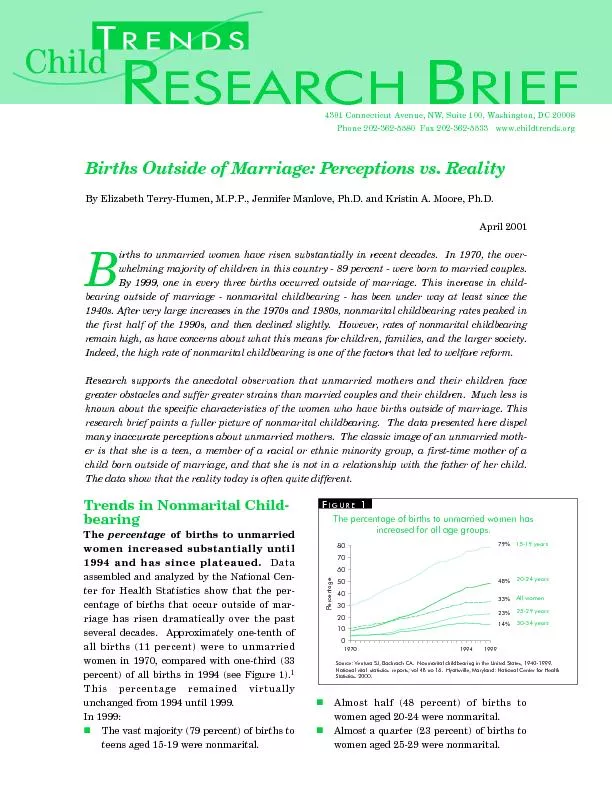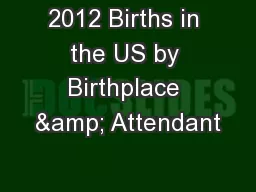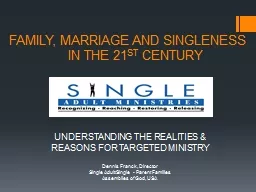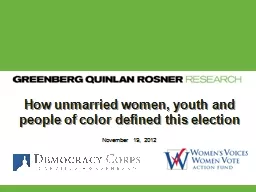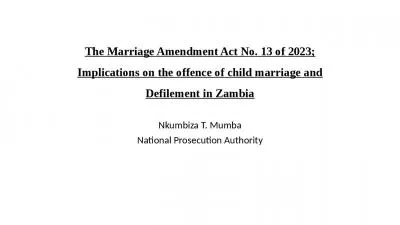PDF-Births Outside of Marriage: Perceptions vs. Realityirths to unmarried
Author : lois-ondreau | Published Date : 2016-08-20
Almost half 48 percent of births to 4301 Connecticut Avenue NW Suite 100 Washington DC 20008 RIEF Source Ventura SJ Bachrach CA Nonmarital childbearing in the United
Presentation Embed Code
Download Presentation
Download Presentation The PPT/PDF document "Births Outside of Marriage: Perceptions ..." is the property of its rightful owner. Permission is granted to download and print the materials on this website for personal, non-commercial use only, and to display it on your personal computer provided you do not modify the materials and that you retain all copyright notices contained in the materials. By downloading content from our website, you accept the terms of this agreement.
Births Outside of Marriage: Perceptions vs. Realityirths to unmarried: Transcript
Download Rules Of Document
"Births Outside of Marriage: Perceptions vs. Realityirths to unmarried"The content belongs to its owner. You may download and print it for personal use, without modification, and keep all copyright notices. By downloading, you agree to these terms.
Related Documents

